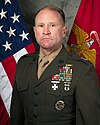
The United States Central Command is one of the eleven unified combatant commands of the U.S. Department of Defense. It was established in 1983, taking over the previous responsibilities of the Rapid Deployment Joint Task Force (RDJTF).

III Marine Expeditionary Force is a formation of the Marine Air-Ground Task Force of the United States Marine Corps. It is forward-deployed and able to rapidly conduct operations across the spectrum from humanitarian assistance and disaster relief (HA/DR) to amphibious assault and high-intensity combat.

The I Marine Expeditionary Force is a Marine Air Ground Task Force (MAGTF) of the United States Marine Corps primarily composed of the 1st Marine Division, 3rd Marine Aircraft Wing, and 1st Marine Logistics Group. It is based at Marine Corps Base Camp Pendleton.
Combat service support is a topic that is, broadly speaking, a subset of military logistics. However, combat service support is often more limited in depth, as the related groups primarily address factors supporting readiness for combat operations. The United States Department of Defense organizes various agencies providing services such as medical assistance, for example, akin to other nations' militaries.

John F. Sattler is a retired United States Marine Corps Lieutenant General and was the Director of Strategic Plans and Policy, U.S. Joint Chiefs of Staff. He was also concurrently the United States' representative to the Military Staff Committee of the United Nations.

The II Marine Expeditionary Force is a Marine Air-Ground Task Force consisting of ground, air and logistics forces capable of projecting offensive combat power ashore while sustaining itself in combat without external assistance for a period of 60 days. The II Marine Expeditionary Force is commanded by a lieutenant general, who serves under U.S. Marine Corps Forces Command, providing Marine fighting formations and units to European Command, Central Command and Southern Command. The current Commanding General is Lieutenant General David A. Ottignon. The Deputy Commanding General is Brigadier General Andrew T. Priddy.
In the United States Marine Corps, a Marine air–ground task force is the principal organization for all missions across the range of military operations. MAGTFs are a balanced air–ground, combined arms task organization of Marine Corps forces under a single commander that is structured to accomplish a specific mission. The MAGTF was formalized by the publishing of Marine Corps Order 3120.3 in December 1963 "The Marine Corps in the National Defense, MCDP 1-0". It stated:

The United States Fleet Marine Forces (FMF) are combined general- and special-purpose forces within the United States Department of the Navy that perform offensive amphibious or expeditionary warfare and defensive maritime employment. The Fleet Marine Forces provide the National Command Authority (NCA) with a responsive force that can conduct operations in any spectrum of conflict around the globe.

The United States Marine Corps is organized within the Department of the Navy, which is led by the Secretary of the Navy (SECNAV). The most senior Marine commissioned officer is the Commandant of the Marine Corps, responsible for organizing, recruiting, training, and equipping the Marine Corps so that it is ready for operation under the command of the unified combatant commanders. The Marine Corps is organized into four principal subdivisions: Headquarters Marine Corps, the Operating Forces, the Supporting Establishment, and the Marine Forces Reserve.

The U.S. Marine Corps Forces, Pacific (MARFORPAC) is the Marine Corps service component command of U.S. Indo-Pacific Command. It is the largest field command in the Marine Corps and is headquartered at Camp H. M. Smith in Hawaii. The MARFORPAC area of responsibility covers more than half of the earth's surface.

The Commander, U.S. Marine Corps Forces Command (COMMARFORCOM), headquartered at the Naval Support Activity Hampton Roads in Norfolk, Virginia, commands service retained-operating forces; executes force sourcing and synchronization to affect force generation actions in the provisioning of joint capable Marine Corps forces, and directs deployment planning and execution of service retained-operating forces in support of Combatant Commander (CCDR) and service requirements; serves as Commanding General, Fleet Marine Force, Atlantic and commands embarked Marine Corps forces; coordinates Marine Corps-Navy integration of operational initiatives and advises CDR U.S. Fleet Forces Command (USFF) on support to Marine Corps forces assigned to naval ships, bases, and installations; conducts Service directed operational tasks as required. COMMARFORCOM is also the Commander, Marine Corps Forces Northern Command (MARFORNORTH), the Marine service component command of U.S. Northern Command.
The Fleet Marine Force, Pacific (FMFPAC) is the largest maritime landing force in the world. Its units are spread across the Pacific Ocean and reports to the United States Pacific Command. It is headquartered at MCB Camp H. M. Smith, HI and directs and commands all the subordinate elements of the Navy Expeditionary Strike Force and Marine Air-Ground Task Force components that follow under the 3rd, 5th, and 7th Fleet and the Marine Corps Forces, Pacific (MARFORPAC). The Commanding General of Marine Corps Forces, Pacific is dual-posted as the Commanding General of Fleet Marine Force, Pacific. FMFPAC is under operational control of the Commander, United States Pacific Fleet (COMPACFLT), when deployed.
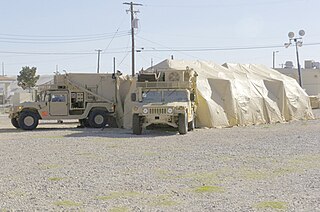
In the United States Marine Corps, the command element (CE) is the command and control force of a Marine Air-Ground Task Force (MAGTF). It provides C3I for the MAGTF.
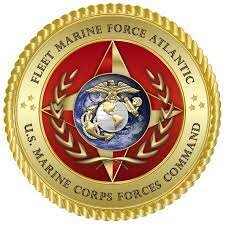
The Fleet Marine Force, Atlantic (FMFLANT) is an American maritime landing force that is spread across the Atlantic Ocean. It is headquartered at Naval Station Norfolk and directs and commands all the subordinate elements of the Navy Expeditionary Strike Force and Marine Air-Ground Task Force components that follow under the 2nd, 4th, and 6th Fleet and the Marine Forces Command (MarForCom). The Commanding General of Marine Forces Command is dual-posted as the Commanding General of the Fleet Marine Force, Atlantic. FMFLANT is under operational control of the Commander-in-Chief, United States Fleet Forces Command, when deployed.
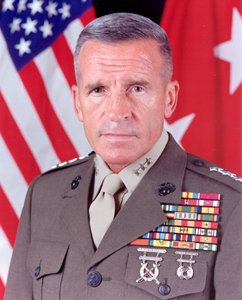
Robert B. Johnston was a United States Marine Corps lieutenant general whose last duty assignment was as Commander, Marine Forces Atlantic, Marine Forces Europe and II Marine Expeditionary Force. During the Gulf War, he served as the CENTCOM Chief-of-Staff. He retired from the Marine Corps in 1995 after over 34 years of service.

Steven A. Hummer is a retired United States Marine Corps lieutenant general who served as Deputy to the Commander for Military Operations for United States Africa Command (AFRICOM).

Kenneth Franklin McKenzie Jr. is a retired United States Marine Corps general who served as the 14th commander of the United States Central Command from March 28, 2019 to April 1, 2022. He served as Director of the Joint Staff from July 5, 2017 after having previously served for two years as Director of Strategic Plans and Policy (J-5) on the Joint Staff.

Brian D. Beaudreault is a retired United States Marine Corps lieutenant general who most recently served as commander of II Marine Expeditionary Force. He previously served as the Deputy Commandant for Plans, Policies, and Operations and Commanding General, 2nd Marine Division.
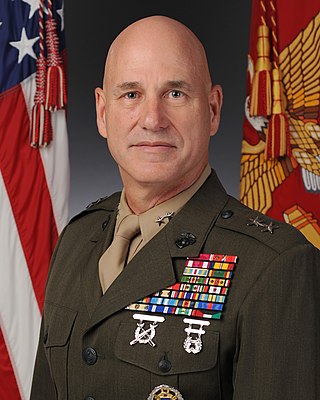
Paul W. Brier is a retired United States Marine Corps major general. A combat veteran of the Persian Gulf, Iraq, and Afghanistan wars, he retired on 31 December 2016, completing 36 years of military service. He holds a BS in Civil Engineering from the Virginia Military Institute and a Master of Strategic Studies from the U.S. Army War College. A 2012 CAPSTONE Fellow at the National Defense University, he is a graduate of the Defense Resources Management Institute, Naval Postgraduate School; Air War College; Joint Forces Staff College; and Marine Corps Command and Staff College.

U.S. Marine Corps Forces Korea is the Marine Corps service component of United States Forces Korea and the United Nations Command. MARFORK is responsible for commanding Marines assigned to the USFK and the UNC, advising the two commands on the proper support and employment of Marine forces, and contributing to the defense of the Republic of Korea with the deployment of Marines. The head of MARFORK is also the representative of the U.S. Marine Corps to the Commandant of the Republic of Korea Marine Corps. It is headquartered at Camp Humphreys, South Korea.














